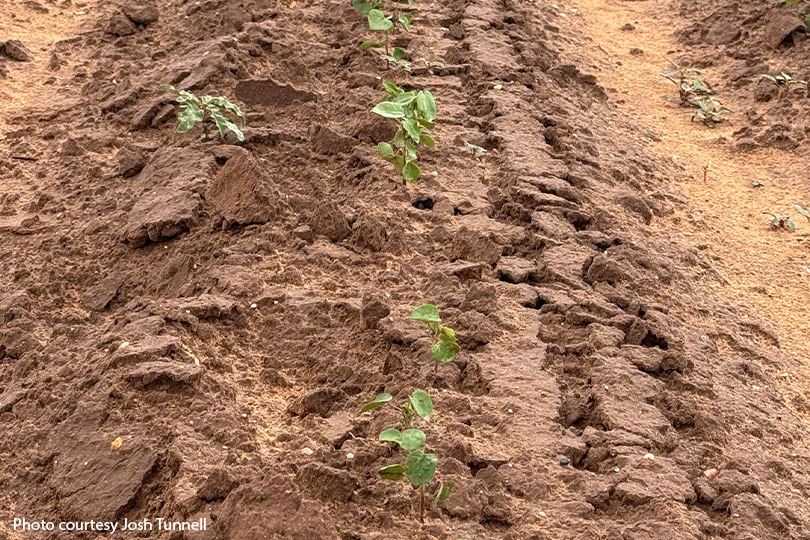By Shelby Shank
Field Editor
Cotton farmer Josh Tunnell of Lenorah is hoping for rain and relief from years of unrelenting drought.
This season, Tunnell planted 1,300 acres of cotton, but his crop is already weeks behind.
“It’s really far behind right now,” he said. “We’ve been in one of the few areas that didn’t get the rain we needed to get our crop started. The cotton is probably three or four weeks behind where it should be right now.”
One timely rain helped the cotton emerge, but dry conditions quickly returned.
A recent stretch of high winds, blowing 20 to 35 miles per hour day and night, only made things worse.
“The winds sucked a lot of the ground moisture out and caused sand burn on the cotton,” Tunnell said. “That’s going to set it back a little bit, but we’re hoping that we can catch some rain in the next couple of weeks and be able to produce a crop by harvest.”
Dry conditions have become the norm in recent years, and Tunnell started the season with low expectations.
“We knew going in that our probability of getting a crop started were slim to none,” Tunnell said. “This year was another year that we were extremely, extremely dry all through the spring. Most of our acres were dry planted, and we were able to catch that one rain to help get the crop up.”
Now, he’s counting on more rainfall to sustain what little growth has started.
“We’re just hoping that we get another rainfall to keep it growing,” he said.
Weather remains the biggest challenge for Tunnell. Martin County has received below-normal rainfall for several years, and over the past four seasons, he’s harvested less than 15% of the cotton acres he planted.
The combination of drought and rising input costs has forced Tunnell to scale back cotton acreage and diversify with other crops to reduce financial risk, especially with current cotton prices making it difficult to turn a profit.
“Cotton is probably one of the least likely crops we have right now that will produce a profit, even if we were to make a crop,” Tunnell said.
Still, he remains cautiously hopeful.
“We have some decent crops established. It’s a little hit and miss in our area,” he said. “I’m at least hopeful that we get to harvest something, and if nothing else, just to give some of the local gins some business.”
Prolonged drought has kept several gins in the area from opening in recent years due to a lack of cotton acres to support them. Tunnell fears some may never reopen.
“We can’t afford to lose that kind of infrastructure if we want to keep the cotton industry intact,” he said.
So, Tunnell keeps his eyes to the sky and hopes for some well-timed summer rain to turn things around.
“With some timely rains through July and August, we still have the potential of producing a decent crop on the acres where we have a good crop established,” he said.


Leave A Comment